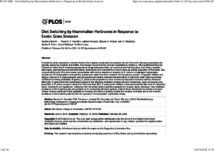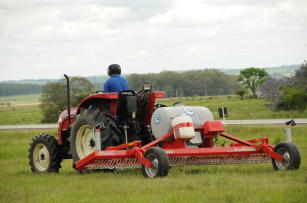Diet switching by mammalian herbivores in response to exotic grass invasion.
Diet switching by mammalian herbivores in response to exotic grass invasion.
Author(s): BREMM, C.; CARVALHO, P. C. F.; FONSECA, L.; AMARAL, G. A.; MEZZALIRA, J. C.; PEREZ, N. B.; NABINGER, C.; LACA, E. A.
Summary: Invasion by exotic grasses is a severe threat to the integrity of grassland ecosystems all over the world. Because grasslands are typically grazed by livestock and wildlife, the invasion is a community process modulated by herbivory. We hypothesized that the invasion of native South American grasslands by Eragrostis plana Nees, an exotic tussock-forming grass from Africa, could be deterred by grazing if grazers switched dietary preferences and included the invasive grass as a large proportion of their diets.
Publication year: 2016
Types of publication: Journal article
Keywords: Animal herbívoro, Eragrostis plana, Erva daninha, Pastagem
Related content
Observation
Some of Embrapa's publications are published as ePub files. To read them, use or download one of the following free software options to your computer or mobile device. Android: Google Play Books; IOS: iBooks; Windows and Linux: Calibre.
Access other publications
Access the Agricultural Research Database (BDPA) to consult Embrapa's full library collection and records.
Visit Embrapa Bookstore to purchase books and other publications sold by Embrapa.


